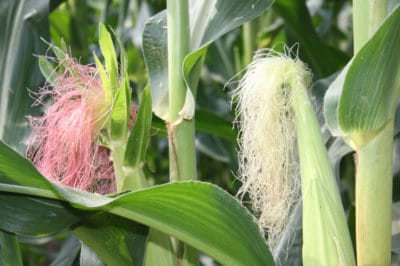How Is Corn Pollinated?
Since the majority of your garden plants are pollinated by bees, you have probably made sure to plant lots of bee-friendly plants to attract the insects to your garden. Bee attractors are a great addition to any garden, but when it comes to your corn plants, all the bees in the world will not help with pollination!
Instead, you can pollinate your corn only by the wind and proximity.
Because pollination is wind-generated, you need to space your corn plants to maximize pollination. Although you can grow corn in long rows, this is only recommended if you are growing an entire field of corn.
How to Increase the Pollination Rate
In smaller garden plots, corn is most easily pollinated when you plant it in blocks. For example, four rows of corn with four plants in each row is an excellent size for most gardens Planting several of these blocks will increase the chances of pollination, which in turn increases your yield.
Tip: If you are growing more than one variety of corn, do not plant them close together. If you do, cross-pollination will occur. If your garden plot is too small to provide adequate space between varieties, try planting a tall plant like sunflowers in between different corn strains.
Can You Hand Pollinate Corn?
If you plant a specific variety of corn such as an heirloom variety and do not want to take any risks will cross-pollination or need to be sure that pollination occurs, you can also pollinate by hand. Although hand pollination can be time-consuming, it is not a complicated process. You simply need to do the following:
- Watch the weather and plan to hand-pollinate on a calm day.
- Cut a tassel off of several stalks of corn. You should be able to see the pollen on each tassel.
- Lightly brush the tassel on the silk you see emerging.
- Repeat the process until all of your corn is pollinated, replacing the tassel if you can no longer see pollen on it.
Tip: Keep in mind that it only takes a few grains of pollen to pollinate your corn. One of two tassels should be enough for the entire plot in most home gardens.
Things to Remember
In the majority of cases, Mother Nature does an excellent job of creating conditions ripe for pollination. The only time you should consider pollinating by hand is if you have an heirloom or rare variety that you do not want to take any chances on. If this is not the case, all you need to do is water and care for your young corn plants and nature will take care of the rest.
